How to upgrade from Windows 7 or 8 to Windows 10 via Windows Update
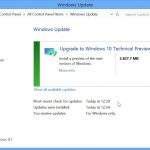
If you like the idea of trying out the next version of Windows before it is officially launched, Microsoft has made the Windows 10 Technical Preview available for everyone to use. There are various ways to get the preview installed on your computer, but since the release of build 9926, it is possible to upgrade your current Windows 7 or Windows 8 installation to Windows 10 using Windows Update.
This is a much simpler option than downloading the ISO image, but it is an upgrade route that almost encourages people to install the preview build on their everyday computer -- don’t forget that this is not a finished product! We've already looked at how to install Windows 10 in a virtual machine, but if you have a spare machine running Windows 7 or 8, using it as a test bed for Windows 10 just got a whole lot easier.
Microsoft releases May 2015 firmware upgrades for Surface Pro 3, Pro 2
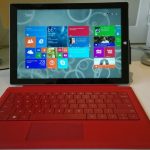
After a brief hiatus, Microsoft has released new firmware upgrades for its Surface Pro 3 and Surface Pro 2 Windows 8.1 tablets. The May 2015 releases feature updated drivers and UEFI, which, as expected, are meant to refine the user experience.
There are no new firmware upgrades available for the original Surface Pro, however, nor for Surface RT, Surface 2 and Surface 3, the last of which Microsoft unveiled in late-March. Now, let us take a close look at what the latest Surface Pro 3 and Surface Pro 2 firmware updates bring to the table.
iPhones and iPads rule the enterprise market, Windows is slowly gaining ground
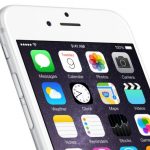
While Android is the clear leader in the mobile market, in the enterprise space arch-rival iOS is the platform that actually comes out on top. Apple's iPhones and iPads make up 72 percent of all mobile device activations, while handsets running the green droid operating system have to make do with just 26 percent.
Unsurprisingly, it is iPhone 6 which sustains Apple's enterprise dominance, coming out as the most-popular handset in the enterprise thanks to it making up 26 percent of all activations between January and March. Apple's flagship is followed by Samsung's Galaxy S5. Together, the two leading vendors offer 28 out of the 30 most-popular devices in the enterprise.
Microsoft opens up Surface 3 mass deployments
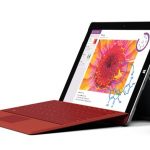
You don't have to be a fan of the Surface lineup to like what Microsoft has done with Surface 3. It runs the full-fledged version of Windows, packs a free Office 365 subscription, gets decent battery life, is light, has a large display for a tablet, offers lots of internal storage, has a full-size USB port, and can take a Type Cover keyboard. As far as its laptop-replacement credentials go, Surface 3 most definitely bests any iPad that is on the market today. And, to top it all off, Microsoft's latest slate can be had for as little as $499.
Given the core feature set it packs, Surface 3 is well positioned to take on the iPad in the enterprise market. But, to become a truly attractive option, it needs to be easily deployable. And now Microsoft has addressed this too.
It really is game over for Windows 8.x

Every month NetMarketShare releases usage share figures for all of the major operating systems. In the past these figures tended to paint an interesting picture of how well -- or rather how badly -- Microsoft’s newest operating system was doing. Occasionally the OS grew share, occasionally it lost share -- sometimes quite dramatically.
Now though, the only picture that’s being painted by these monthly figures is an operating system that has no future and will vanish quietly, and with zero fanfare, once Windows 10 arrives.
At $149, Vensmile W10 mini PC is a handset-shaped Windows 8.1 device that ships in US
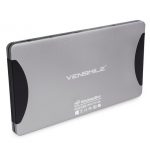
Remember the Compute Stick? The $149 pen drive-shaped HDMI dongle from Intel running on Windows 8.1? Well, we’ve just found another similar device -- only a better. Called Vensmile W10 mini PC, the handset-shaped block offers twice as much storage, with more ports but the same processor as Intel’s Compute Stick.
As for the specifications, the miniature computer measures 5.9″ x 3.1″ x 0.39″. Underneath it sits an Intel Atom Z3735F Bay Trail processor coupled with 2GB of RAM, and 64GB of storage. For connectivity options, the Vensmile W10 mini PC supports Wi-Fi and Bluetooth 4.0. Interestingly, it packs in a 3,000 mAh battery as well, which not only can keep the device running in case of a power outage, but also serve as a power backup device to charge your phone or tablet.
ASUS introduces the 15-inch ZenBook Pro UX501 high-end ultrabook
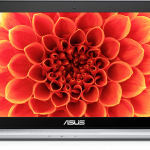
If you want a high-end 15-inch Windows laptop that is light and visually attractive you will most certainly not be spoilt for choice. PC makers are focusing on the smaller segments, which usually means a display size of around 13-inches. Sure, you can always grab a 15-inch MacBook Pro with Retina display and slap Windows on it, but that is not the same thing.
Fortunately, ASUS continues to include a 15-inch high-end option in its ZenBook lineup, as it just introduced ZenBook Pro UX501. It packs all the right features a buyer in this segment is looking for: ultra-high resolution screen, fast processor, lots of RAM, insanely fast SSD, dedicated graphics and a big battery, all in a package that is not much bigger and heavier than Apple's offering. What is not to like?
How to create a bootable Windows 10, Windows 8.x or Windows 7 USB flash drive

If you want to install Windows from scratch, you have two choices -- you can install the OS from a CD/DVD or from a USB flash drive. The latter is the better option, especially as optical drives are becoming something of a rarity these days.
The process of creating a bootable USB flash drive for Windows 7, 8.1 or 10, is quick and easy. Here’s how to do it.
Microsoft Surface 3 vs Surface Pro 3: Which is best for you?
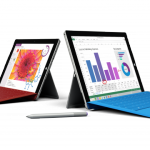
Before Microsoft announced Surface 3, choosing a Surface tablet was ultimately a matter of deciding which Surface Pro 3 model fits you best, depending on your budget and needs. But now that there's a new kid on the block, which is offered in four, very distinct trims, finding the right Surface just got trickier.
Just like its older brother, the new Surface 3 features a high-resolution display, promises great battery life, offers a decent amount of storage, packs an x86 processor and runs Windows 8.1. The optional Type Cover keyboard makes an appearance as well, and so does Surface Pen. But there are some differences, of course. So which one should you buy?
Windows 8.x still nowhere near as popular as Windows XP

It’s fair to say, Windows 8.x has enjoyed something of a rollercoaster ride when it comes to usage share. While it’s never been a popular operating system (quite the opposite in fact), share has gone up and down, with gains one month being wiped out by losses the following month.
NetMarketShare’s monthly usage share figures provide a decent guide as to how Microsoft’s tiled OS is doing, and it’s usually pretty interesting, although February was a fairly unexciting month.
Windows 8.1's market share remains utter rubbish

Last month, web analytics firm NetMarketShare released its usual batch of monthly desktop operating system usage share figures, and it showed Windows 8.x tumbling dramatically. The figure made little sense, and a day later the firm released revised data which showed the tiled OS still shedding a large chunk of share, but not quite as badly.
In December’s revised figures NetMarketShare had the OS falling 5.13 percentage points for a total share of 13.52 percent, placing it back way below Windows XP. This meant January’s figures were always going to be interesting. Surely the tiled OS would rally wouldn’t it? But of course this is Windows 8.x, Microsoft’s least successful operating system in recent memory, so no. Its usage share remains utterly rubbish.
I'm sold on Windows 10, but are you?

Windows 10 is shaping up to be the best Windows yet. I am still wrapping my head around it, but after going through most of the changes I think there are a ton of things to like about it, which is an astonishing achievement. Microsoft really managed to surprise me, and I didn't expect that, to be perfectly honest.
However, what seals the deal for me is how all the changes tie together. I can now say that there are clear benefits to using the latest Windows across all devices that support it. It makes total sense, for the first time. In fact, without even trying the new Preview release, I am sold on Windows 10. Count me in as one of the first to make the switch on all of my devices!
Gotcha! Google angers Microsoft by exposing Windows vulnerability

At the end of last week, Google took the somewhat unusual step of releasing details of a Windows vulnerability before a patch had been produced. Microsoft is unhappy. Very unhappy. The bug, which affects the 32- and 64-bit versions of Windows 8.1 Update, was publicized as part of Google's Project Zero, but Microsoft is calling it a "gotcha".
So angered was Microsoft that Chris Betz, Senior Director of Microsoft Security Response Center hit out at Google in a strongly worded blog post. Citing the war against cyberattacks, Betz expresses anger that Google made public a security issue about the elevation of privileges in Windows user accounts, saying that companies should "come together and not stand divided".
Panasonic shows off a ToughPad for POS, runs Windows 8.1
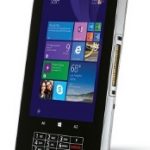
Panasonic is known for its rugged notebook computers and, more recently, tablets. The devices have become essential for folks in certain fields of work. While folks in the construction industry can benefit from this technology, what about those who have a need to process payments while on the go? Panasonic now has that covered as well, unveiling the Toughpad FZ-R1 mobile point-of-sale tablet.
This is a seven inch tablet that runs Windows 8.1 and is powered by an Intel Celeron processor. It also comes with a PIN pad to make accepting payments simpler.
Intel's Compute Stick is a Windows 8.1 PC on an HDMI dongle
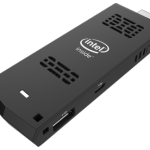
The Enterprise edition of Windows 8.1 has a feature called Windows To Go, which lets you build a portable version of the operating system that you can run directly from a USB flash drive. It works well enough but you need a super-fast (and therefore expensive) USB 3.0 stick to get decent performance.
Intel has come up with an alternative solution that can turn any HDMI display into a fully functioning computer running Windows 8.1 with Bing, or Ubuntu Linux.
Recent Headlines
Most Commented Stories
© 1998-2025 BetaNews, Inc. All Rights Reserved. About Us - Privacy Policy - Cookie Policy - Sitemap.